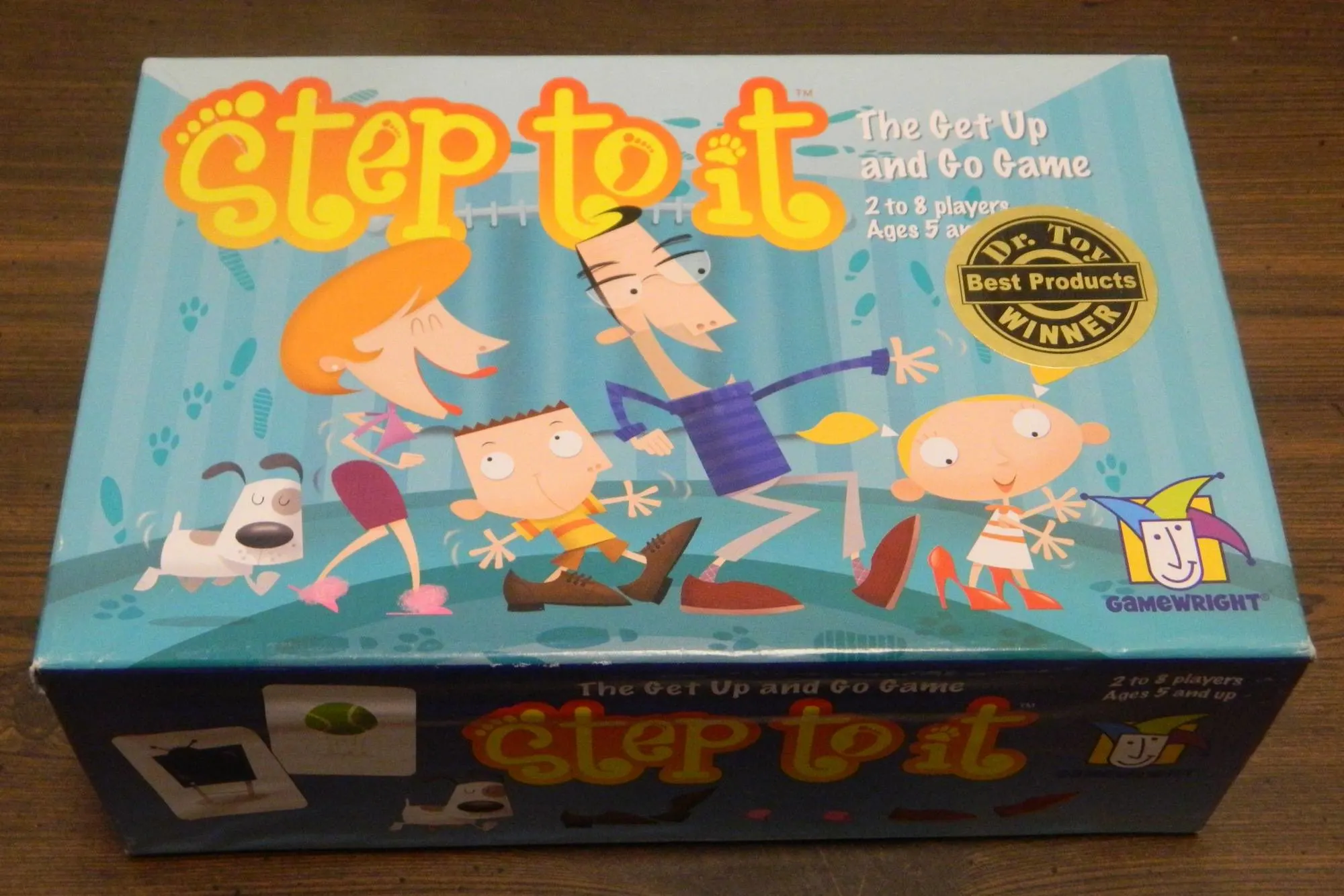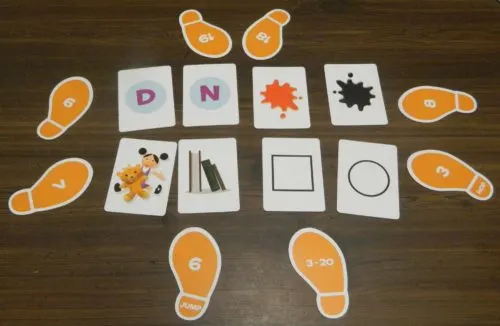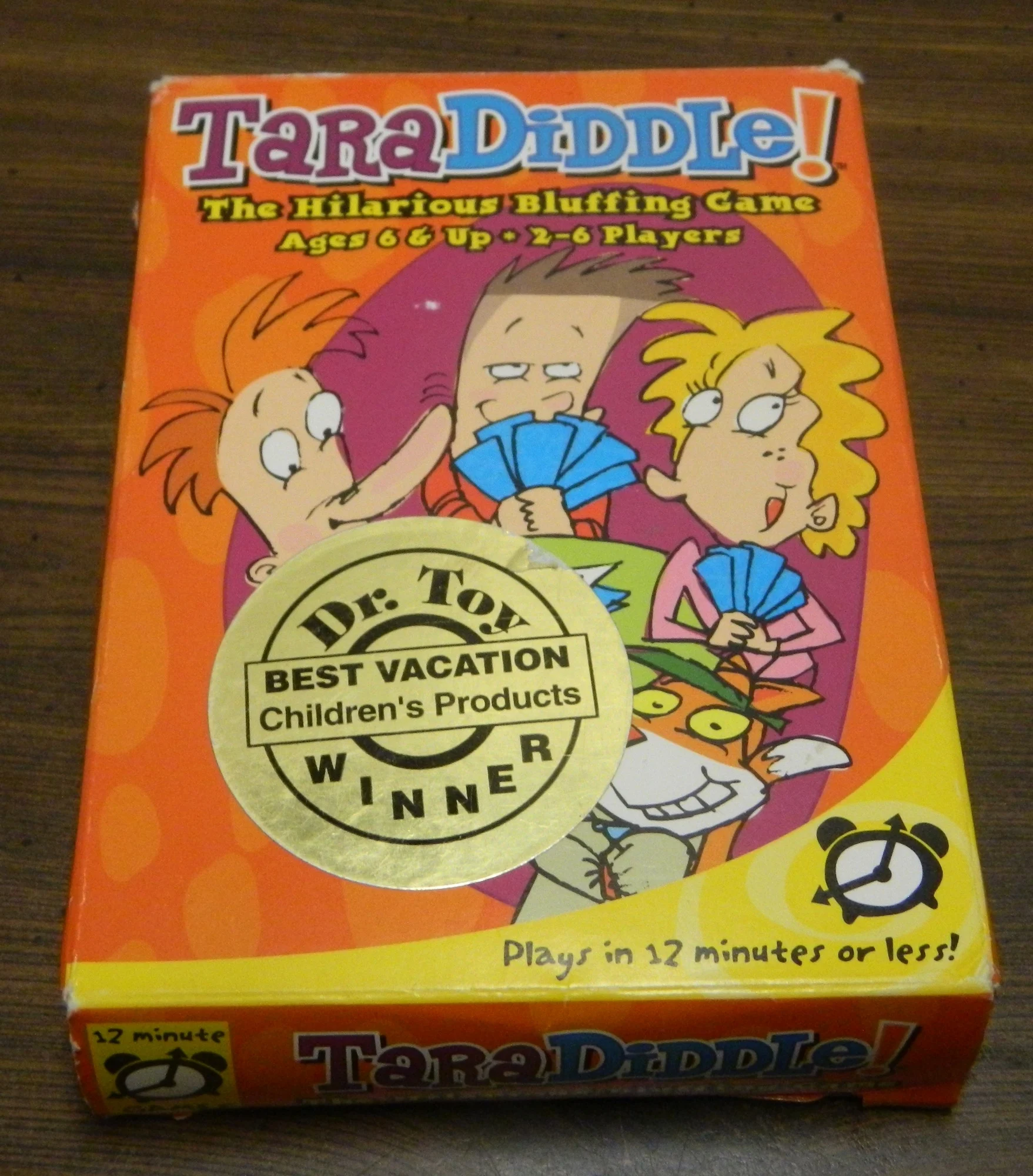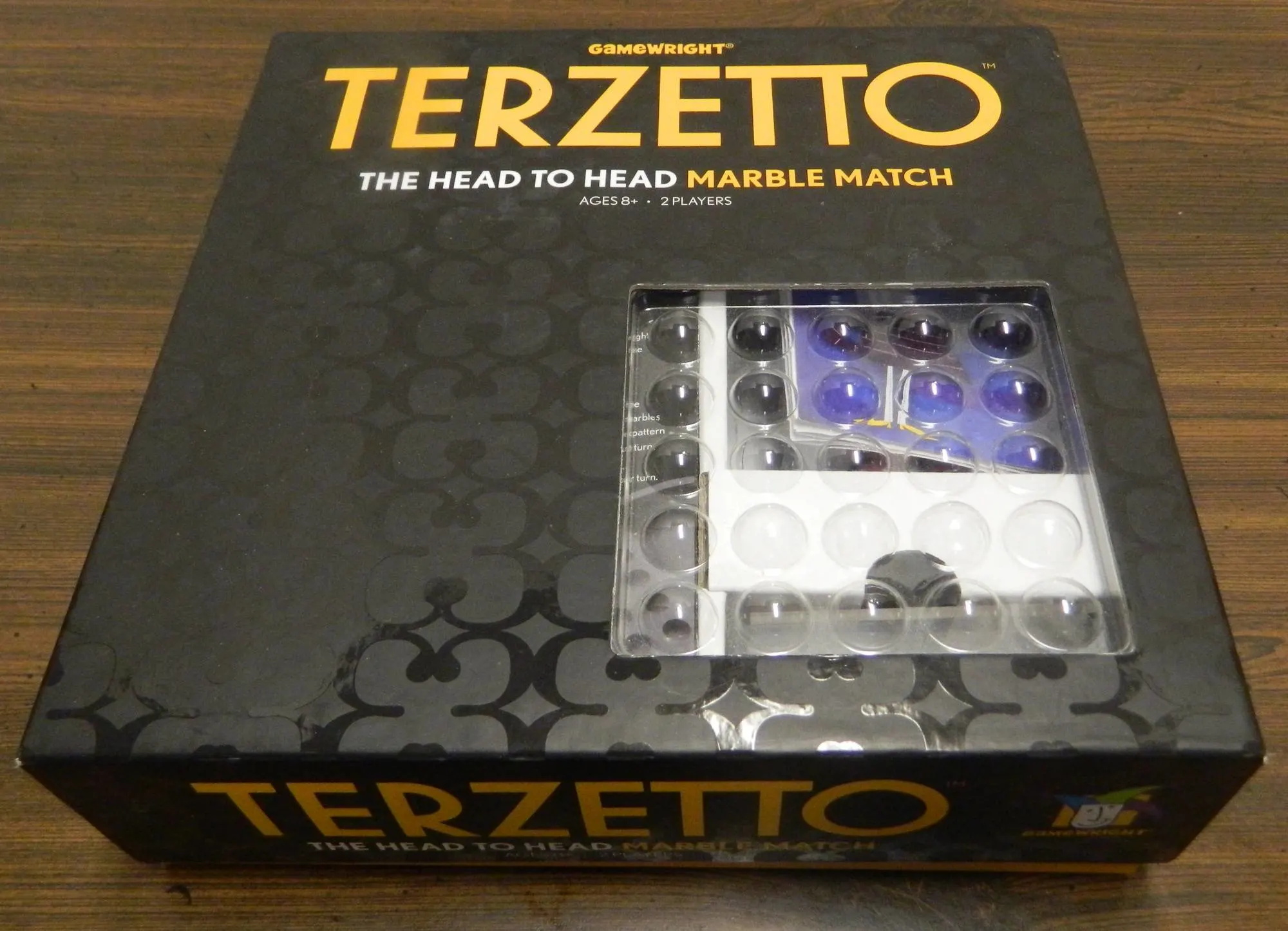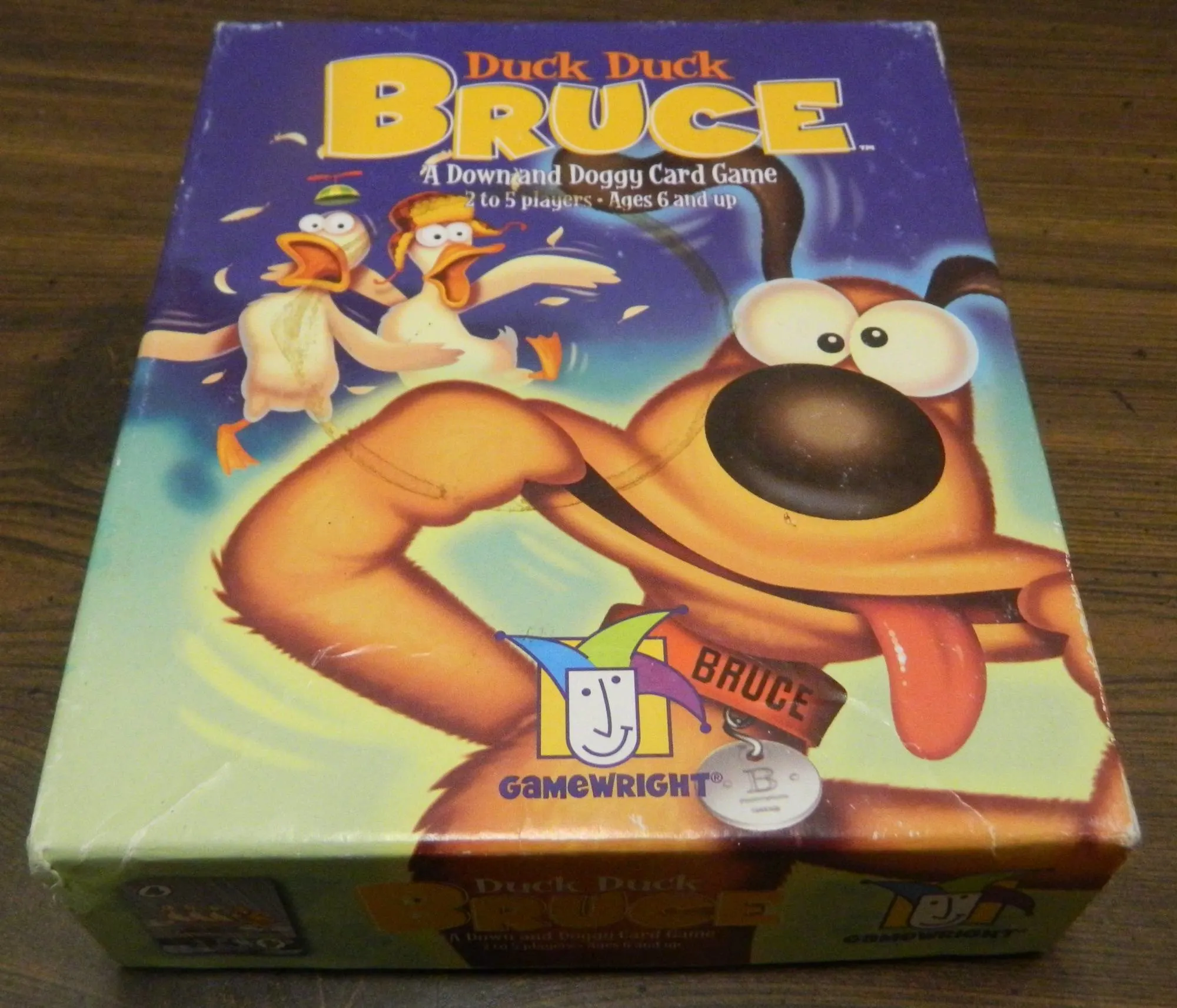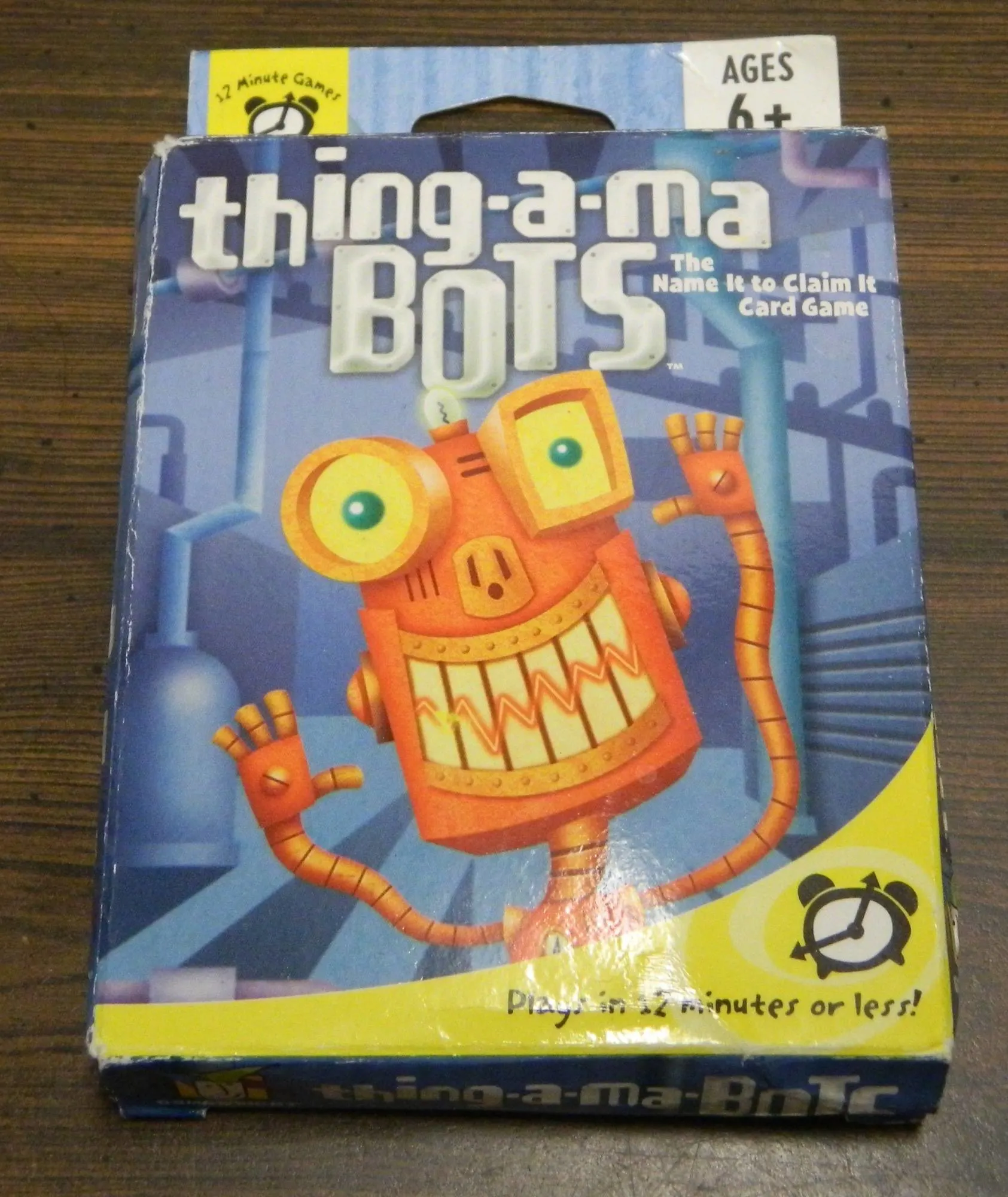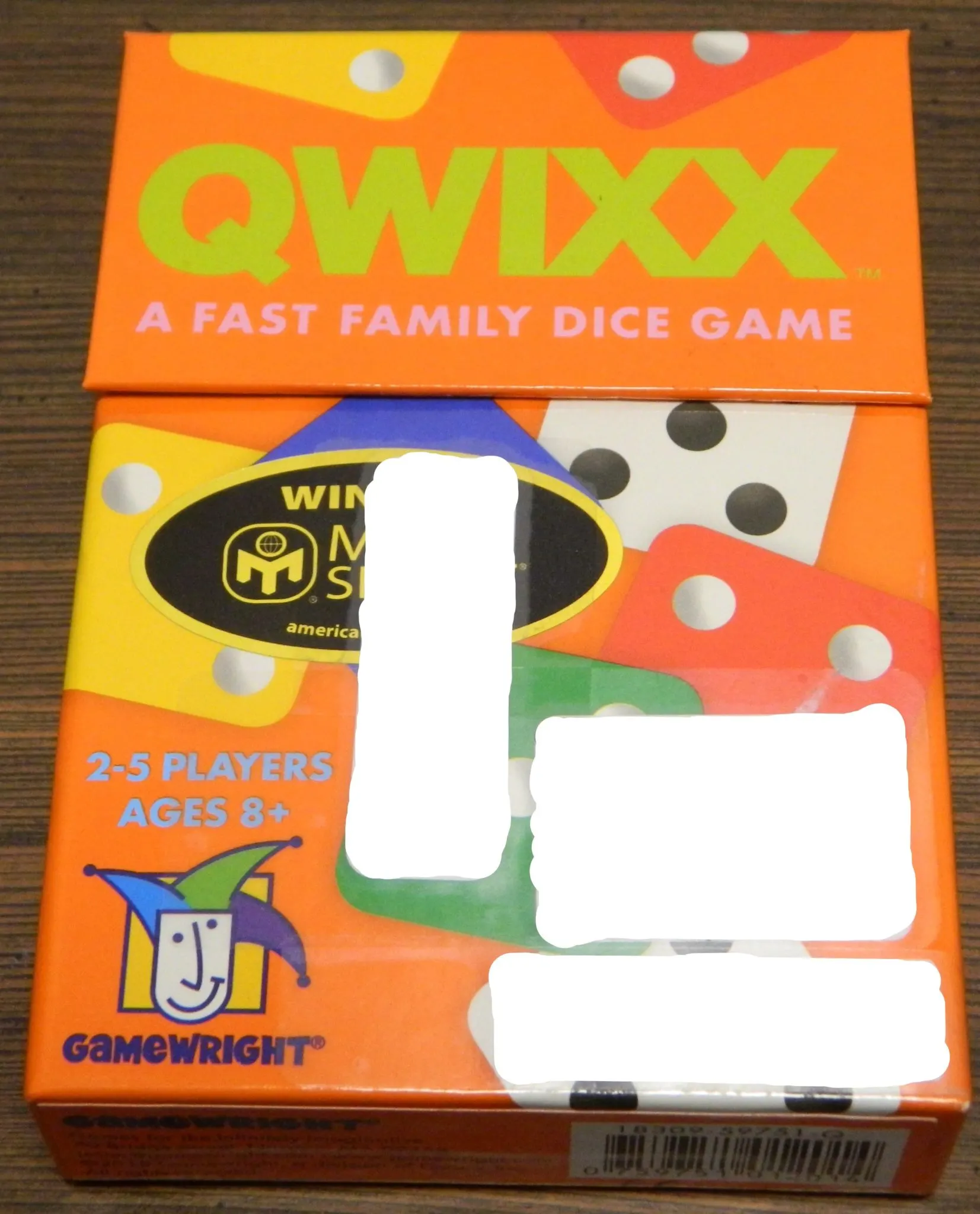Regular readers of Geeky Hobbies will know that we have played quite a few different board games, around 700 at this point. After you have played that many different board games, you tend to encounter a lot of games that share quite a few similarities with one another. It is pretty rare to find a game that is truly unique. Today’s game Step To It actually succeeds in that regard as it is genuinely unlike anything I have ever played before. The problem is that the game was obviously made for younger children and their parents which made me a little hesitant. Step To It is a surprisingly unique game that young children and their parents will probably really enjoy, but it is far too silly for older children and adults to take seriously.
How to Play Step To It
Setup
- Shuffle the step cards. Place twice as many cards as there are players face up in the center of the playing area. If there are only two players, place three or four cards per player. The rest of the step cards are placed face down off to the side.
- Shuffle the goal cards. Place the same number of goal cards as step cards you did in the previous step. You can choose which side of each card you would like to place face up. Look over all of the face up cards to make sure that there is at least one object within range that the card could apply to. If there are no matching items, replace the card with a new card. All of the cards that weren’t used are returned to the box.
- The player with the most colorful socks will start the game.
Playing the Game
A player’s turn begins with the player on their left choosing a step card for them. If the card has a range on it, the player who chose the card gets to choose how many steps they will give the other player. If the card has the word “hop” on it, the player will have to hop to the item on one foot. If the card has the word “jump” on it, the player will have to jump to the item with both feet.
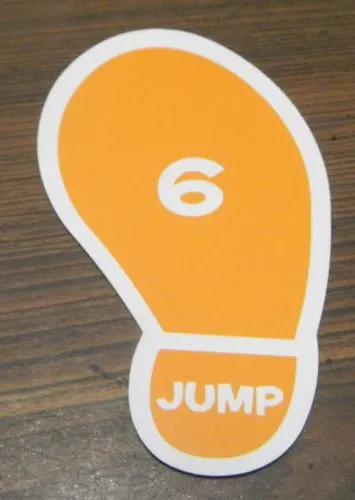
The player to the left of the current player has chosen a jump six card. The current player will have six jumps to reach one of the goal cards.
After a player has been given a step card, they will look at the face up goal cards. The player studies the cards looking for an item that they think they can reach in the number of steps indicated on their step card. When the player has made a choice they pick up the chosen card. They will then indicate what item they are going to try and reach. There are four different types of goal cards:
- Object: You must choose an object that is the same as the object on the card.
- Color: You must choose an item that is the same color as the card.
- Shape: You must choose an item that is the same shape as the card.
- Letter: You must choose an item that starts with the same letter as the card.
The current player then stands up. They will attempt to reach the item matching the goal card in exactly the number of steps on their step card. When making steps/hops/jumps, they must all be the same length. If you reach your destination in the exact right number of steps you will get to keep the step card and take one of the step cards set off to the side as a bonus. The goal card is then returned to the play area.
If the player either reaches the destination before running out of steps, doesn’t reach the destination in the designated number of steps, or makes steps of various lengths; the player fails the challenge. They will get to make another attempt from the same starting point. If they complete the challenge on their second attempt, they will get to keep the step card they were given. If they fail, the player will receive nothing for the round as the step card they were given is returned. In either case the goal card is returned to the play area.
Play then passes to the player to the left of the previous player.
End of Game
The game ends when all of the step cards from the play area have been taken by one of the players. Each player counts up how many step cards they collected. The player who collected the most step cards wins the game. If there is a tie, the tied player with the highest numbered step card wins the game.
Variant Rule
Instead of the player on the left giving the current player a step card, the player chooses a goal card. The current player then chooses a step card that will get them to the item on the goal card.
My Thoughts on Step To It
As I mentioned at the beginning of the review, Step To It deserves a lot of credit for its originality. It is a rare occurrence when I find a board game that is genuinely unique in all aspects. While a lot of games have their own twists, after playing over 700 different games there is usually something about almost every game that I play that reminds me of another game that I have played. To Step To It’s credit, I never really got that feeling while playing the game. Step To It is a truly unique experience.
It is kind of hard to truly describe what it is like to play Step To It. It doesn’t really fit into any of the traditional board game genres. Step To It doesn’t even have players sit around the table for the whole game. Basically the game revolves around trying to estimate how far different objects are away from you and how many steps it would take to reach an object. Then to prove your estimation right, you need to try and reach the object in the given number of steps. The player who is able to reach the most objects in a specific number of steps wins the game.
Before I played Step To It I have to honestly say that I thought this sounded pretty stupid. How could a game where you are walking towards different objects in your house be enjoyable? The game just looked so silly that I couldn’t imagine anyone other than the youngest children having any fun with the game. While I wouldn’t say that my initial impression was totally wrong, I will admit that I actually had more fun with the game than I was expecting.
While Step To It is quite silly, in the right situation you can actually have some fun playing the game. Step To It is a truly original experience. The game kind of plays like a dexterity game where instead of manipulating a game piece, you are manipulating your own body. If you play the game like it is intended with normal sized steps, the game is going to become dull rather quickly. The game is most enjoyable when players have to make silly steps. In particular the game is enjoyable when you have to make really long steps to reach an item in another room or tiny steps when you try to use a lot of steps to reach a nearby object. When playing with children or after some drinks, you can have some laughs as the current player has to make silly steps in order to reach their destination. This silliness is immediately going to turn off some adults who will refuse to play it. People who are willing to make a fool out of themselves though can have some fun with Step To It. It is far from the best game that I have ever played, but it will be a game that I will remember for quite some time.
Just looking at the box you can tell that Step To It was made for younger children. The game is quite easy to play as all you need to know to play the game is the ability to count to 20 and some basic shape/color/word recognition. The game has a recommended age of 5+ but younger kids who can count to 20 shouldn’t have any troubles with the game. The game also plays quickly with most games only taking around 15-20 minutes to play.
While I didn’t play the game with younger children, I think they will really enjoy the game. Step To It’s silliness is likely to turn off quite a few adults, but I think it is actually a positive for younger children. Step To It doesn’t hide that it is a silly game. Instead of everyone sitting down and playing the game, players have to get up and move around the house. I can see a lot of young children and their parents getting a kick out of the game’s main mechanic, especially if a card that requires you to hop or jump to a location is drawn. While Step To It is far from a physically demanding game, it may prevent some older players or players with physical limitations from playing.
I was genuinely surprised by Step To It, but that doesn’t mean that Step To It is a good game. While I think young children and their parents will really enjoy the game, it is quite limited for adult audiences. It is a truly unique experience but I don’t see playing it ever again. The game is just too silly and simplistic to keep adults interested which leads to the game getting repetitive quickly. This is reflected in the game’s final rating. The game has some interesting ideas but is ultimately kind of boring. I am kind of curious in what could have been done with the main mechanic if it was gauged more towards older children and adults. My final rating for the game was based on an adult’s perspective without young children. If you have younger children I would probably add at least one star to Step To It’s rating.
Other than being kind of silly and simplistic, the biggest problem with Step To It is the fact that is surprisingly easy to cheat. Unless you make some strict ground rules before playing the game, it is going to be almost impossible to not reach each item on your first attempt. Younger children might not figure it out or be tall enough to take advantage. As the rules are written though there is a lot of flexibility which makes it easy to reach any item in your house.
The first way you can cheat is by how long of steps you take. Nowhere in the rules does it say that your steps have to be your normal stride. The only rule is that every step needs to be the same length. I actually like that the game takes a hands off approach as the best parts of the game are when you are taking really long or short steps to reach an item. Being able to change the length of your stride makes it easy to reach any item though. It is also really hard to enforce the rule that all steps have to be the same length. Unless you follow the player with a tape measure, you basically have to accept anything that is reasonably around the same length. Fudge the length of your steps either way slightly (on purpose or accidentally) and it is hard not to reach any item.
The other way you can cheat comes down to the fact that no where in the rules does it say that you have to take a direct path to an item. It might be somewhat against the spirit of the game, but you can take a longer path to an item if you have excess steps that you have to use up. This works even when you are close to an item as you can basically just make a circle when you get near the item. To battle this we made a house rule that you can’t ever move away from the item in the direction you came from. This just lead us to coming up with creative ways to waste several steps at the end of the path.
As I said before I don’t think this is going to be a big issue with younger children as they probably won’t realize how they can manipulate their steps in order to guarantee they reach the item in the required number of steps. Older children and competitive adults will realize this right away though. While it is kind of funny seeing how the players manipulate the rules, it does lead to an almost certainty that each player will always succeed on their first attempt. This leads to an anticlimactic ending when everyone scores the same number of points.
For the most part I liked Step To It’s components. In particular I liked the game’s artwork. The artwork looks a little childish but that makes sense as the game is meant for children. I think the artwork works really well for the game. I personally think the game could have come with some more cards but the cards are otherwise good. The cards are quite thick and thus should avoid most damage. I also think it was clever to make the step cards look like footprints. While I understand that Gamewright has various standard box sizes, the box for Step To It is considerably larger than it needed to be. The box itself is far from large but the game could have easily come in a standard card game box. This isn’t a huge deal but it might bother people that don’t have a lot of free space.
Should You Buy Step To It?
When I first saw Step To It I had next to no expectations. The game looked like another really silly children’s game that would only appeal to the youngest of children. It turns out that Step To It is actually a really unique experience. The game is quite silly but I actually had more fun with the game than I was expecting. Step To It deserves credit for being different than any other board game that I have ever played. I think younger children and their parents will have a blast playing the game. Even though I didn’t play the game with young children, I don’t regret playing the game. I don’t anticipate ever playing it again though. There just isn’t enough to the game to keep adults or older children interested as the game is quite silly and repetitive. It is also really easy to cheat in the game which makes it almost impossible not to succeed on your first attempt every time.
Basically my recommendation comes down to whether you have younger children. If you don’t have any children or they are older, Step To It is probably not worth picking up. If you have younger children that would be interested in Step To It’s gameplay, I think you could have a lot of fun with the game.
If you would like to purchase Step To It, you can find it online: Amazon, eBay

